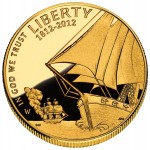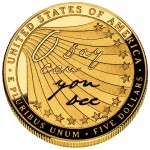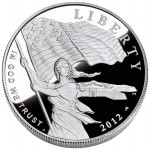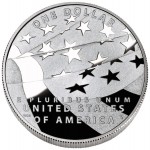Oct 31, 2012 | charity, currency, fun, history, pocket change
Before I begin with today’s post, to help the victims of Hurricane Sandy, I urge my readers to donate what they can to the American Red Cross. You can donate online or you can Text REDCROSS to 90999 to donate $10 to the Red Cross Disaster Relief fund. Charges will appear on your wireless bill, or be deducted from your prepaid balance.
Those of us in the D.C. metropolitan area dodged the wrath of Sandy for the most part. There are power outages, trees down, and flooding, but not to the extent north and east of here. It may take a day or two for what passes as normalcy to return to the area but we are in better shape than the coastal areas from the Delmarva Peninsula north to Connecticut and Rhode Island. I wish all of those in the effected areas well and hope their recovery goes as smoothly as possible.
Today’s post is lighter than planned. I rather than do a 2012 version of the numismatic trick or treat as I did last year, I will show off a pocket change find was not found in pocket change and not even change, per se. At our last coin club meeting someone paid for their auction lots with this Series 1953 $2 Federal Reserve Note. Although it is not in good shape and there is a tear in the bottom corner, I decided to take it as part of payment for the lots I sold.

Sec. George M. Humphrey
Thomas Edgar Stephens (1957)–Oil on canvas
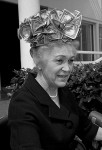
Priest Pictured with a hat of money when she announced her candidacy for treasurer of California (circa 1966)
Humphrey was the 55th Secretary of the Treasury serving during Eisenhower’s first term. It was reported that Humphrey gave up a $300,000 annual salary as president of the steel manufacturer M.A. Hanna Company to accept a Cabinet position that paid only $22,500. After retiring from government service, Humphrey returned to Hanna Company and later became chairman of National Steel Corporation.
Long time readers will remember that Priest was the mystery guest on the television game show “What’s my Line” that aired on August 29, 1954. If you forgot, you can go back and watch the video.
Aside from being a political leader in Utah and the 30th Treasurer of the United States, Priest is also the mother of Pat Priest who is better known for playing Marilyn Munster on the 1960’s sitcom “The Munsters.”

Pocket Change Find: Obverse of a Series 1953 $2 Federal Reserve Note signed by Treasurer Ivy Baker Priest and Secretary of the Treasury George M. Humphrey
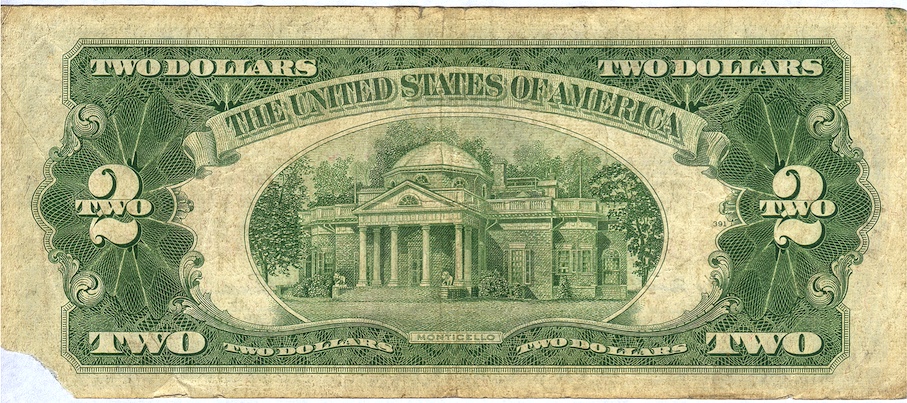
Pocket Change Find: Reverse of a Series 1953 $2 Federal Reserve Note featuring image of Jefferson’s Monticello.
Oct 29, 2012 | ANA, shows, web
The American Numismatic Association announced that the 2014 National Money Show will be held in Atlanta and the 2015 show will be in Portland, Oregon.
Aside from moving the spring show back to March, the Atlanta show will be held February 27 to March 1, 2014 at the Cobb Galleria Centre in northwest Atlanta. For 2015, the show will run March 5-7 at the Oregon Convention Center.
For those interested in the 2013 National Money Show, it will be held May 9-11 at the Ernest N. Morial Convention Center in New Orleans. This will be a little more than three months after the Super Bowl is played at the Superdome and slightly less than two months after Mardi Gras. N’awlins is a heckova party town and I am looking forward to making another visit to the Crescent City!
In other ANA news…
The board approved a $5.8 million operating budget that includes a surplus of $6,650 based on revenue projections. I hope that the projections are sound since that leaves a one-tenth of one percent margin of error. This year’s budget will allow the ANA to have greater presence at regional shows, increase the number of field trips offered to the Money Museum from area schools, and expand course offerings at Summer Seminar.
Improvements continue to money.org including the introduction of The Exchange, a blog to exchange comments and ideas amongst ANA members. If you are interested in posting, see the information at the top of the page for more information.
Work continues to improve the website and extend its capabilities is ongoing.
Oct 28, 2012 | coins, gold, grading
Professional Coin Grading Service announced that they certified their 25 Millionth coin. The coin is a rare 1871 (Meiji 4) 10 Yen With Border on the Reverse variety. It was among a group of 33 coins recently submitted by a PCGS Collectors Club member in Toyko. On October 24, 2012 it was certified PCGS Secure Plus™ MS65.
As a gift of appreciation to mark the milestone submission, PCGS is awarding the Japanese collector a Saint-Gaudens Double Eagle gold coin graded PCGS Secure Plus MS65 and valued today at $2,500.
The 1871 10 Yen is an important coin in Japanese numismatic history, according to PCGS. During the fourth year of the reign of Emperor Meiji, Japan adopted a gold standard under the New Currency Act of 1871, and it marked the start of the modern era of Japanese decimal coinage.
The 1871 10 Yen contains 16.6 grams of .900 fine gold, and 1,867,032 of the coins were minted that first year. The obverse design features a dragon and a pearl representing the sun. The reverse includes a mirror, sunburst and military banners with a raised line border around some of the design elements.
PCGS estimates the value of this particular coin at $6,000 or more.
Congratulations to PCGS on this milestone!
Image courtesy of PCGS.
Oct 27, 2012 | auction, Carson City, coins, gold, GSA, silver, tokens
How many of you look at the online auctions from the auction houses dedicated to numismatics and feel intimidated?
I can see quite a few virtual hands raised. You probably like coins shows but find the large crowds at some of those shows may also be intimidating. After all, you’re a collector, not an investor or a professional. Sometimes, you can find gems at smaller shows and even smaller auctions.
This is why I was intrigued by an auction notice sent by Stephenson’s Auctioneers and Appraisers from Southampton (Bucks County), Pennsylvania. Judging by their website, Stephenson’s is a local auction company that mainly serves buyers and sellers in its region with and probably has some clientele outside the eastern Pennsylvania area where they are located.
The nice thing about these local auction houses is that they are more accessible than the big houses and they usually have items that are affordable to the average collector. While high-end auctions are fun, if you are buying for yourself, you may not be the type looking to spend six-figures or higher on a coin.
If that is the case and you are in the Bucks County, Pennsylvania area on Friday, November 2, you may want to stop by Stephenson’s and check out their more than 200-lot coin auction that may include “some nice last-minute surprises.”
These are estate auction from the eastern Pennsylvania area. According to the information sent to me, the auction includes a wealth of Morgan silver dollars will be offered, with no fewer than 15 lots comprised of three Morgans each. An uncirculated 1882 Carson City Morgan silver dollar is one of the highlights, and another early example is a trade silver dollar dated 1877. Other antique American coins include Capped Bust half dollars from 1809 and 1838; an 1806 Draped Bust half dollar, and a Seated Liberty half dollar from 1843.
The auction includes two gold pieces. One is a 1914 Indian Head quarter eagle ($2½) and a 1917 $1 gold coin commemorating the slain U.S. President William McKinley.
There are many collectors’ books of coins, including a Washington quarter book (1932-1945) with 24 silver quarters, a Liberty Head nickel book (1883-1912) with 25 nickels, a Standing Liberty book with 10 silver half dollars, a Mercury dime book with 74 silver dimes, including 1921 and 1921-D; and a book consisting of 60 Buffalo nickels. Also included are a Walking Liberty half dollar book with 14 half dollars, a Barber dime book, Roosevelt dime book and Kennedy half dollar book with 59 Kennedy halves, including three 1964 and nine 1965 through 1970 coins. Flying Eagle and Indian Head penny sets will be available, as well as many other books, too numerous to mention.
Desirable non-monetary gold and silver items with both intrinsic and historical value include a boxed set of three 24K gold over .999 silver ingots commemorating the 1973 Triple Crown Winner Secretariat, and a framed sterling silver set titled “The Official Bicentennial Medals of the Thirteen Original States.”
Other lots of interest include two California Gold tokens (1852 and 1853) and an 1860 $5 note issued by the Miners and Planters Bank of North Carolina. Fractional currency, and U.S. Prestige and Olympic Prestige sets.
Auction will be held on Friday, November 2, 2012 at Stephenson’s gallery located at 1005 Industrial Blvd., Southampton, PA 18966. Auction preview is on the auction day from 2-4 p.m. The auction starts at 4 p.m.
For additional information, call Cindy Stephenson at 215-322-6182 or e-mail info@stephensonsauction.com. There will be no Internet bidding for this sale; it is exclusively for gallery, phone and absentee bidders. Visit Stephenson’s online at www.stephensonsauction.com.
If you are in the area, go and have some fun. Who knows, you may find something interesting to bid on!
Some of the items in this auction
-

-
1882 Carson City uncirculated Morgan silver dollar with original GSA box and paperwork. You do not see too many CC Morgans with the original box and paperwork!
-
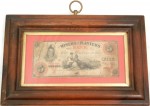
-
1860 $5 note, Miners and Planters Bank of North Carolina.
-

-
Three 24K gold over .999 silver ingots Commemorative of Secretariat.
-

-
Thirteen sterling silver “Official Bicentennial Medals of the Thirteen Original States.”
-
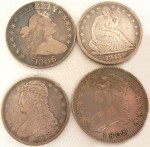
-
Early US coins, including 1809 and 1838 Capped Bust half dollars, 1806 Draped Bust silver dollar, and a, 1843 Seated Liberty half dollar.
-
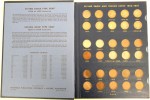
-
Flying Eagle and Indian Head Cent set in a Whitman Album
-

-
1914 Indian Head Quarter Eagle ($2½) gold coin and McKinley Commemorative “Dollar” gold piece.
-
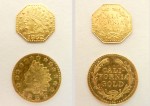
-
1852 and 1853 California Gold Rush tokens
All images courtesy of Stephenson’s Auctioneers.
Oct 22, 2012 | coins, exonumia, fun, other, personal, tokens
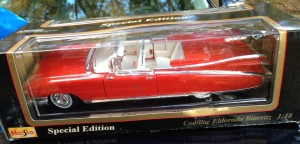
My dream car… in model form!
Saturday was the 2012 Rockville Antique and Classic Car Show, a yearly show supported by 25 local and regional car clubs. When I arrived around 1 o’clock I saw a field with more than 500 antique and classic cars. Although I was not interested in some cars, there were others that were absolutely stunning. While I did not find a 1959 Cadillac, there were a few cars that I would love to own. You can see some of the cars I found and a quick video of the inside of a Volkswagen Bus visit on my page at Photobucket.†
While the 1959 Cadillac is my dream car, my nostalgic car is a 1973 Plymouth Gold Duster. While it was not my first car, it ranks one of my favorites from my early days. This Gold Duster was “sunshine yellow” with the brown snake-skin three-quarter covered vinyl top. The 225 Hemi Slant 6 engine output 145 horsepower but was more than enough for this car especially since it did not have air conditioning! My father bought it as a new car in 1973 and I “inherited” it in 1980 while in college. Unfortunately, it met its demise on a rainy road while trying to avoid hitting a dog.
To satisfy my nostalgia, I was looking at the wares of the flea market dealers in the adjacent lot when I came across a brochure for the 1973 Gold Duster. “Get Ready to Stake Your Claim” screams the headline on the front cover. Open the brochure and it tells you that “You’ve Discovered Gold Duster.” While admiring the picture that reminded me of my youth, I noticed the coin image at the bottom right corner that said:

If you cannot read the image, it says:
BLAKE & COMPANY $20.00 GOLD PIECE
This gold coin is a replica of the fame Twenty Dollar California Gold Piece, struck in about 1855, that bought sustenance during the days of the great Gold Rush.
This is a replica of only two known specimens. The originals are so rare no value has been established.
Notice the very fine detail and workmanship. The press embossed on the coin is a good representation of what a coin press looked like in the 1800’s. The milling around the edge of the coin was done to prevent shaving the coin—thereby decreasing its value. The original coins were .900 pure gold.
You can make a complete collection of famous United States coins by consulting the back page of this booklet.
Interested in what this collection can be, I turned over the brochure see a 1973 advertisement for 12 “authentic replicas” of the Chrysler-Plymouth “Old West” Coin Collection. The collection appears to be replicas of various assay tokens from the famous gold assayers of the time. For $7.75 per set (or $40.39 today), you could have ordered a full set along with a vinyl/velour folder.

Chrysler-Plymouth “Old West” Coin Collection Order Form from 1973 Plymouth Gold Duster Brochure
At the intersection of cars and numismatics I found fascinating piece of automotive advertising history with a numismatic slant. I do not know if a version of this set has survived—an Internet search yielded more copies of the brochure—but it would be interesting to find a set.
† At the time this is posted, I have not labeled the images on Photobucket. I hope to finish that sometime this week.
Oct 13, 2012 | cash, dollar, fun, video
Now that it has been three weeks since the autumnal equinox, the kind folks at the National Weather Service has issued a freeze warning for the Washington, D.C. area almost ending most outdoor activities. Aside from finding new coats for the dogs and their human parents and looking for a good charity which to donate the old coats, it is time to look for something to do indoors.
Being a blog about numismatics, I went on a search to find something a little different that the whole family could do when I stumbled on a YouTube video teaching the watcher “How to Make an Origami Dollar Ring.” It’s fun, functional, and costs only one dollar per ring.
Interestingly, the host of the video starts with showing how to use plain paper if you do not have a U.S. one dollar note. All it takes is using ordinary paper that is cut down to 15.5 cm in length and 6 cm in width. It is better to use metric measurements so that you can cut the sheet to the right size. Another advantage of using plain paper is that you can print anything on it prior to folding.
Here is the video to teach you what to do:
If you want to make your own ring using plain paper, I created a template based on the video’s instructions. The advantage of using the templates is that you can create your own design. After I folded my own dollar, I decided to make my own design based on the theme to this blog. Here are my results:
-

-
Origami Ring made using a $1 Federal Reserve Note
-
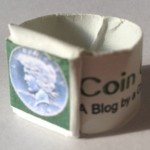
-
Origami Ring made using the the template colors of the Coin Collectors Blog
If you want to make your own ring, I created templates with lines showing the basic folds. I am including a blank template for you to create your own design and the template I used to make the Blog ring. Click on the link for the format you want and it will automatically download the file for you.
NOTE: When you click on the link above, your browser may open the file using the appropriate application on your computer. How this works depends on the browser you use and how you have it configured.
Oct 12, 2012 | bullion, Federal Reserve, gold, history, review
Prior to the very entertaining Vice Presidential Debate, the National Geographic Channel aired a show titled “America’s Money Vault” that was part of their “Behind the Scenes” week. The show was hosted by Jake Ward, editor-in-chief of Popular Science magazine.
The show is centered around the Federal Reserve and primarily the operations of the Federal Reserve Bank of New York. After opening the show at Times Square, we are transported downtown to the New York Fed where they are accepting a deposit of over 1 ton of gold. Following an explanation that the New York Fed is the most trusted handler of gold in the world and has 25-percent of the world’s gold on deposit, we watch the transfer process.
As part of the transfer process, the cameras are brought into the vault and the viewers are show “walls” of gold bars. Unlike the images in the 1995 movie Die Hard: With a Vengeance, it appears that the vault that is more solid than the jail-like bars shown in the movie.
Ward visited with Federal Reserve Chairman Ben Bernanke to talk about the Fed’s roll in the markets. While in Washington Ward visits the Bureau of Engraving and Printing to show some of the process in currency printing. There was also a discussion with the United States Secret Service about anti-counterfeiting.
One of the more interesting visuals was when Ward visited the East Rutherford Operations Center (EROC), one of the New York Fed’s currency operations. Viewers were shown rows of currency and coins being stored on shelves throughout the building. And in a scene to warm my technical heart, the robotic inventory system was profiled.
According to NatGeo TV, the next time America’s Money Vault will air is on Thursday, October 18, 2012 at 4:00 PM Eastern Time. If you will be away at that time, it is worth setting the DVR (or VCR for those still going old school) to record this show.
Oct 11, 2012 | Baltimore, coins, commemorative, news, US Mint
On the heels of their success in the London 2012 Olympic Games, Michael Phelps and other Olympic athletes from Maryland including Katie Ledecky of Bethesda and Suzanne Stettinius of Parkton were presented with a Star-Spangled Banner Commemorative Coin at a celebration held on Monday, September 10, 2012 at Baltimore’s Inner Harbor.
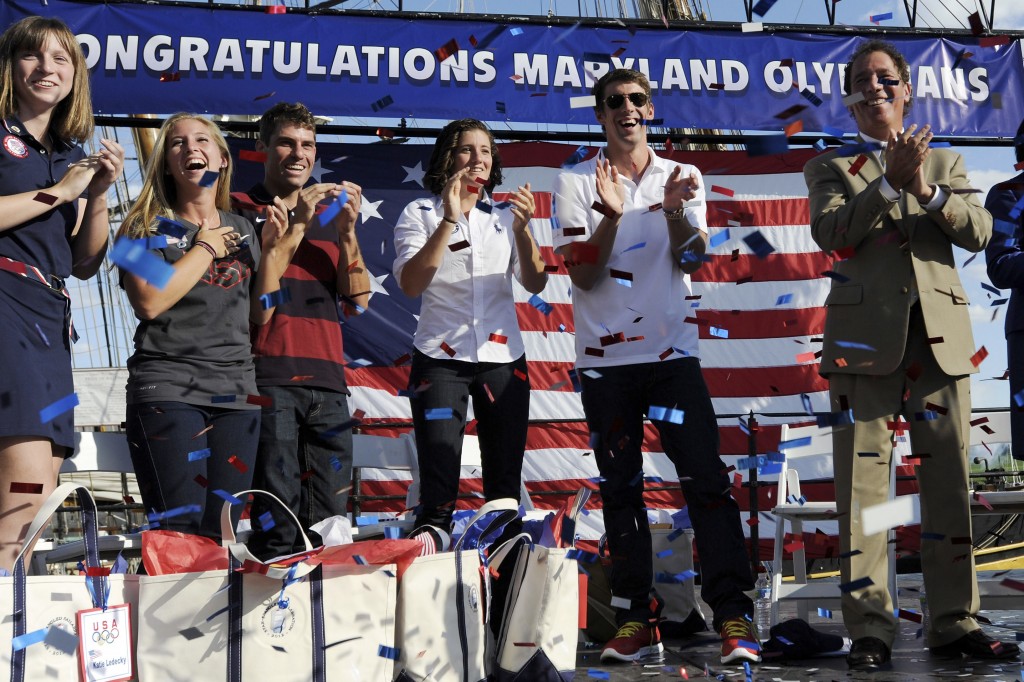
Michael Phelps, second from right, joins other Olympic athletes from Maryland, including Katie Ledecky, left, windsurfer Farrah Hall, second from left, and Suzanne Stettinius, third from right, and Baltimore County Executive Kevin Kamenetz, right, during a celebration of the achievements of Maryland Olympians. (Steve Ruark/AP Photo)

Olympian Michael Phelps shows his Star-Spangled spirit and receives a new piece of “metal” from Maryland Governor Martin O’Malley.
“Our Maryland Olympians’ resolve to work hard, train and excel embodies the spirit of our state,” said Gov. Martin O’Malley. “It’s only fitting that we honor them with these 2012 Star-Spangled Banner Commemorative Coins, which pay tribute to Maryland’s vibrant people and extraordinary history.”
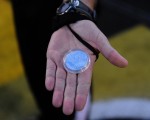
Star-Spangled Banner Commemorative held by the referee that was used at the Ravens-Browns game on September 10, 2012.
“As we celebrate a variety of sports on Monday, the Star-Spangled Banner Commemorative Coin will serve as a symbol to our local athletes of Maryland’s historic tie in defending our freedom during the War of 1812,” said Ann Beegle, executive director of Star-Spangled 200 Inc., the non-profit affiliate of the Maryland War of 1812 Bicentennial Commission prior to the game. “Baltimore is home to the Star-Spangled Banner and we are pleased to recognize these athletes’ dedication with a historic symbol of our state.”
The 2012 Star-Spangled Banner Commemorative Coins, created in honor of the bicentennial of the War of 1812, exemplify the Star-Spangled Banner flag and Francis Scott Key’s poem, “The Defence of Fort McHenry” that became our national anthem. These are two of America’s most enduring icons. Coin sales will continue through December 17 and are only available through the United States Mint. The Star-Spangled Banner Commemorative coins can be purchased through the United States Mint website, at United States Mint kiosks in Washington, DC (Union Station, 50 Massachusetts Ave. NE and United States Mint Sales Counter, 801 9th Street NW) and at the Baltimore Visitor Center located at 401 Light Street, Baltimore, MD 21202.
Proceeds from the sales ($35 for each gold coin and $10 for each silver coin) to support the Maryland War of 1812 Bicentennial Commission. The commission will use these funds to support its bicentennial activities, educational outreach, and preservation and improvement of the sites and structures related to the War of 1812. Help support the commission’s activities by purchasing a commemorative coin today!
Scott’s coin:
Credits
- AP photo courtesy of reachforthewall.com.
- O’Malley/Phelps and Referee Coin images are courtesy of Star-Spangled 200, Inc.
- Coin images courtesy of the U.S. Mint.
- Image of Scott’s coin is owned by the author and covered under CC BY-NC-ND 3.0 license.
Oct 4, 2012 | Australia, BEP, currency, Federal Reserve, policy
Last year I asked why the United States would not consider using polymer notes after the Bank of Canada made their announcement that they will transition to using the polymer substrate. Not only are polymer notes very difficult to counterfeit, they last longer reducing printing costs and overhead to both the Bureau of Engraving and Printing and the Federal Reserve.
The
Spink Auction was held on October 2, 2012 in their London offices. None of the nine Canadian test notes printed on DuraNote were sold.
After it was announced that Spink of London will auction sheets of DuraNote trial printings from the Bank of Canada, BEP told CoinWorld that they printed as many as 40,000 sheets of Federal Reserve Notes using the DuraNote substrate.
DuraNote was a product of Mobil Chemical and AGRA Vadeko of Canada. Trials of DuraNote were not successful and the project was abandoned. Patents for DuraNote were sold following the Exxon-Mobil merger.
Around the same time, the Reserve Bank of Australia (RBA) developed a polymer substrate with a different formula that went into production in 1992. Since then, Australia has been successfully printing polymer notes.
In the mean time, there continues to be issues with folding of the paper specially designed for the new $100 Federal Reserve Note. Since the October 1, 2010 announcement by the Fed of the folding issue, the Fed and BEP has less than forthcoming on the status of the new note including the BEP withholding their annual report for fiscal year 2011 so they do not have to disclose how many of these notes they have in inventory.
The paper being used by the BEP is manufactured by Crane & Company who has had the exclusive contract with the BEP since 1879.
Where DuraNote failed RBA succeeded in creating a workable technology that is being adopted world wide. With the new $100 note having printing problems, why has the BEP not looked into the RBA polymer substrate for U.S. currency? Why does the Federal Reserve, BEP, and Secret Service cling to 19th and 20th century printing technologies in the 21st century? Or is this a matter of the influence being purchased [PDF] by Crane & Company in order to maintain its monopoly.
Maybe it is time for the Fed and the BEP to re-examine their commitment to paper and stop wasting time and money with failed technologies.
Oct 3, 2012 | coins, commemorative, legislative, policy
The following is a summary of the coin-related legislation whose status was changed in September 2012:
H.R. 2139: Lions Clubs International Century of Service Commemorative Coin Act
Sponsor: Rep. Peter Roskam (R-IL)
Passed the House On Motion to Suspend the Rules and Pass, as Amended 9/10/12
Passed the Senate by unanimous consent 9/22/12
Presented to the President 9/25/12
Track this bill at: http://www.govtrack.us/congress/bills/112/hr2139
H.R. 2453: Mark Twain Commemorative Coin Act
Sponsor: Rep. Blaine Luetkemeyer (R-MO)
Passed the Senate with amendments by unanimous consent 9/22/12
Message on Senate action sent to the House 9/24/12
Track this bill at: http://www.govtrack.us/congress/bills/112/hr2453
S. 3612: Commemorative Coins Reform Act of 2012
Sponsor: Sen. Jim DeMint (R-SC)
A bill to prohibit the payment of surcharges for commemorative coin programs to private organizations or entities.
Introduced and referred to the Committee on Banking, Housing, and Urban Affairs 9/21/12
Track this bill at: http://www.govtrack.us/congress/bills/112/s3612





















